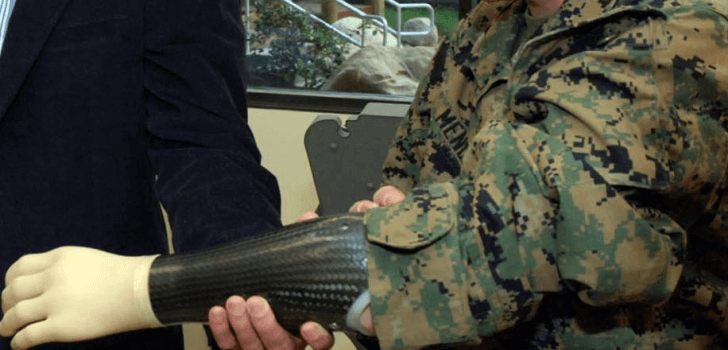Flexible sensors are used in space flights, robotics, healthcare and consumer electronics. And now, possible future applications may include the development of prosthetic limbs and “electronic skin” that will allow wearers to “feel” environmental changes.
One of the problems with the current flexible sensors that are out there is that they are easily scratched and damaged, thereby destroying their functionality.
In order to correct this problem, researchers in the Department of Chemical Engineering at the Technion – Israel Institute of Technology have developed materials that can be integrated into the flexible devices to “heal” these damaging cuts and incidental scratches.The advancement uses a new kind of synthetic polymer that possesses the self-healing properties found in human skin. Essentially, the e-skin “wounds” can “heal” themselves in a very short time – just like real skin.
A paper outlining the development of the one-of-a-kind self-healing sensor has been published in the current issue of Advanced Materials.
Self-healing sensor co-developer Professor Hossam Haick stated that, “The vulnerability of flexible sensors used in real-world applications calls for the development of self-healing properties similar to how human skins heals [itself.]. Accordingly, we have developed a complete, self-healing device in the form of a bendable and stretchable chemiresistor where every part – no matter where the device is cut or scratched – is self-healing.”
The new sensor is made up of a self-healing substrate, electrode resistance and modified gold nanoparticles. Professor Haick noted that, “The gold particles on top of the substrate and between the self-healing electrodes are able to ‘heal’ cracks that could completely disconnect electrical connectivity.”
The polymer substrate demonstrates amazing “healability” at both extremely frigid and hot temperatures. The researchers noted that his property can extend uses of the self-healing sensor to various areas of the world with extreme climates.
Another very unique feature of the material is that after healing once, the electrode resistance increases and makes the self-healing sensor even stronger. In their paper, the researchers pointed out that, “the healing efficiency of this chemiresistor is so high that the sensor survived several cuttings at random positions.”
Co-developer Doctor Tan-Phat Huynh stated that, “The self-healing sensor raises expectations that flexible devices might someday be self-administered, which increases their reliability. One day, the self-healing sensor could serve as a platform for biosensors that monitor human health using electronic skin.”
Stay Connected